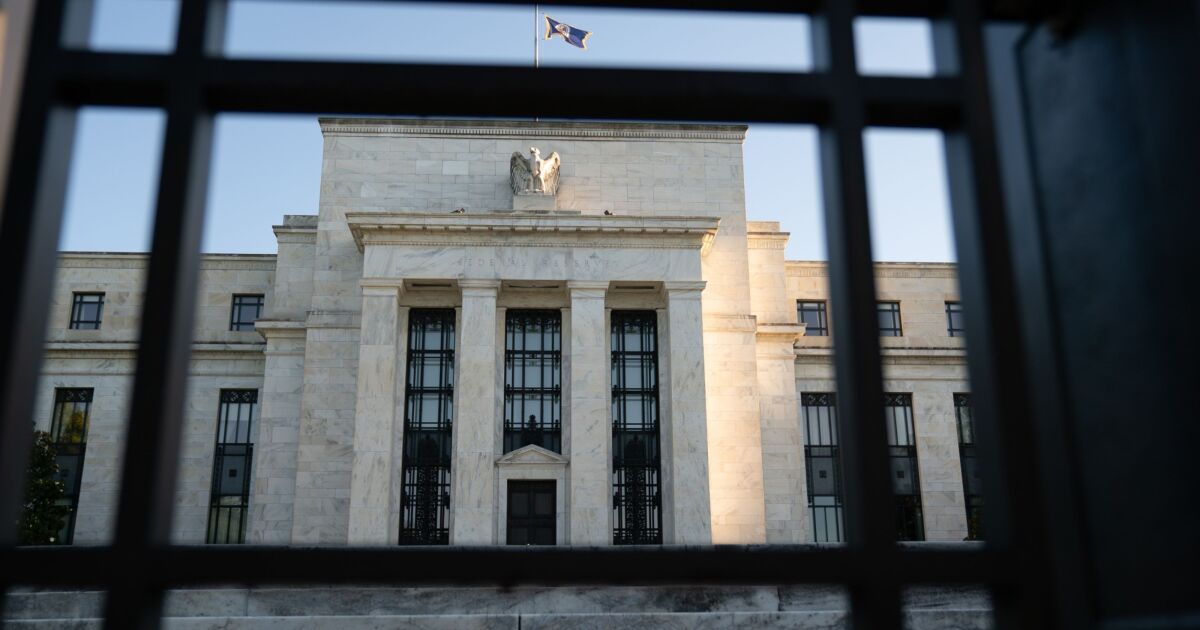
The Federal Reserve’s shift toward a major reduction of its footprint in the U.S. bond market this year has upended expectations for sustained cutbacks to the Treasury’s quarterly sales of longer-term debt, forcing dealers to gird for bigger auction sizes down the road.
With pandemic-relief spending tailing off, the Treasury in November began scaling back what had been record so-called refundings of longer-term securities. That set of auctions saw the first cutback since 2016, and the Treasury at the time hinted at further reductions, saying any such decision would be revealed “in subsequent refunding statements.”
This week’s statement — due Wednesday — will indeed showcase another reduction, dealers say, but after that the Treasury may stand pat. That’s thanks to Fed policy makers, who’ve telegraphed shrinking their bond portfolio later this year.
RELATED: How the Fed’s plans for its portfolio could affect mortgages
The upcoming quarterly refunding, which includes three-, 10- and 30-year debt, is widely seen at a total of $110 billion — some $10 billion less than in November.
“Treasury will likely do cuts this time similar to those it did at its November refunding,” said Subadra Rajappa, head of U.S. rates strategy at Societe Generale SA. “But all bets are off after May, because the Fed is going to discuss balance-sheet runoff over the next couple meetings. And Treasury needs will have to rise commensurately.”
Ira F. Jersey and Angelo Manolatos at Bloomberg Intelligence forecast that the Fed will shrink its $8.9 trillion balance sheet by $2.8 trillion by end-2024 through allowing its holdings to mature without replacement — with about two-thirds of that contraction coming via Treasuries.
The duo sees the process beginning in May, with monthly runoff caps in time being expanded to reach $60 billion for Treasuries and $30 billion for mortgage securities.
One official, Federal Reserve Bank of Atlanta President Raphael Bostic, favors reducing the balance sheet “as quickly as” possible without impairing market functioning, the Financial Times said last week, citing an interview.
But with that Fed process still likely to be months away, the Treasury is left for the moment with auction sizes that are probably too big for its spending needs.
‘Very Consequential’
“At this point, the pace of supply is still set to outstrip financing needs, so further cuts to nominal coupons across the curve are warranted,” said Jonathan Cohn, head of rates trading strategy at Credit Suisse Group AG. Looking forward, “both the timing, as well as the pace of the Fed’s balance sheet runoff will be very consequential for the Treasury in deciding on future auction sizes.”
That’s something the department is well aware of. It asked dealers in its usual survey ahead of Wednesday’s funding what their views were on how Fed plans would affect “financing needs and issuance decisions.”
The Treasury could opt to boost its bill offerings instead.
“Yes, the Treasury is going to have to do more issuance” as the Fed’s footprint shrinks, said Aneta Markowska, chief U.S. financial economist at Jefferies. “But I think it makes perfect sense for them to do all of that in Treasury bills.”
Cash Balance
She pointed to abundant liquidity in money markets — with some $1.6 trillion in cash parked in the Fed’s reverse repo facility — that could flow to short-term Treasuries instead. Markowska sees longer-term debt sales scaled back again in the May refunding.
The Treasury later on Monday will release its quarterly financing estimates, and will give a fresh reading on cash balance assumptions for coming quarters.
As for the pending refunding announcement, in which the Treasury also unveils any changes to its debt-sale plans more broadly, here’s the expected breakdown from Societe Generale:
- Total sales of $110 billion
- Reductions across maturities:
- $2 billion per month for 2-, 3-, and 5-year notes
- $3 billion per month for 7-year notes
- $2 billion for 10- and 30-year new issues and reopenings
- $4 billion for 20-year bond new issues and reopenings
Another feature to watch for: an expansion in sales of Treasury Inflation-Protected Securities, known as TIPS. Dealers expect further issuance after the Treasury Borrowing Advisory Committee, a panel of industry participants, in November recommended growing the share of TIPS as a share of outstanding debt. The securities offer investors compensation for the surge in consumer prices.



